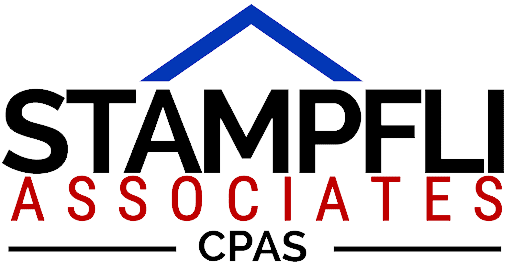
Blog
and News

Every nonprofit needs a disaster plan
Almost no region of the United States has escaped some form of natural disaster or extreme weather this summer. Although wildfires, floods, and unusually high temperatures have grabbed the headlines lately — for good reason — your not-for-profit also needs to be prepared for such unnatural disasters as terrorist threats and mass shootings. It’s a lot to think about. But the better prepared your organization is for an emergency, the higher the likelihood that you can protect staffers, volunteers, and clients from harm and recover operations in a timely manner.

Nonprofits: Outsourcing HR could save time and money
Employers that outsource HR are no longer outliers. Approximately one-third of U.S. employers outsource at least one HR function, according to software company ZipDo. And for good reason: Many HR responsibilities, such as benefits administration and recruiting, have recently become more complex and specialized. If your nonprofit’s HR staff is still trying to do everything in-house, you may want to consider handing over some duties to outside professionals.

Private foundations: “Disqualified persons” must color within the lines
Although conflict-of-interest policies are essential for all not-for-profits, private foundations must be particularly careful about adhering to them. In general, stricter rules apply to foundations. For example, you might assume that transactions with insiders are acceptable so long as they benefit your foundation. Not true. Although such transactions might be permissible for 501(3)(c) nonprofits, they definitely aren’t for foundations. Specifically, transactions between private foundations and “disqualified persons,” such as certain insiders, are prohibited.

4 ways to reduce volunteer risk
Most not-for-profits regard their volunteers as invaluable assets. After all, if it weren’t for your volunteers’ dedication and commitment, your organization might have stalled out a long time ago. It certainly wouldn’t have accomplished as many successes!
However, like your paid staffers, volunteers represent some liability risk. For example, an allegation of volunteer negligence or intentional misconduct could motivate litigation against your nonprofit. A volunteer who’s injured while volunteering could sue your organization. And in certain situations, you could be held liable even if a volunteer acted outside the scope of prescribed duties or accepted procedures. Act now to reduce the possibility that a volunteer could threaten your nonprofit’s future.

Nonprofits: Special events call for tax planning
Tax reporting may be the last thing on your mind when planning a special fundraising event. But your not-for-profit should carefully track revenues and expenses and retain related documentation now to facilitate the reporting process later. Pay attention to the following issues.

Be smart when accepting cryptocurrency donations
Several years ago, when cryptocurrency was still a novel concept, many not-for-profits chose not to accept crypto donations. Now, crypto is so ubiquitous that it’s difficult — and probably a mistake — to refuse it. Yet crypto remains a risky and even unstable form of currency. Here are a few things to think about when accepting these donations.

Do you need to shake up your nonprofit’s culture with new ideas?
Most not-for-profits develop a culture over time that comes to define the organization. But even if your organization has a successful record and reputation, your staffers can become complacent and growth and productivity can suffer. Here’s how to determine if you need to make cultural changes.

How to get the attention of high-net-worth philanthropists
Even if your not-for-profit’s fundraising results have been lackluster recently, one high-net-worth donor can turn your year around and make it a fundraising success. The question is: How do you find ultra-wealthy individuals with philanthropic intentions?

Putting the “public” back in your nonprofit’s PR efforts
Public charities, or 501(c)(3) organizations, are fundamentally different from private foundations. They depend on support from multiple public sources, including individuals in their communities. If your not-for-profit isn’t reaching out to and engaging its broad donor and prospective donor base through the media, it probably needs to revise its PR strategy. Consider these best practices.

Commit to continually improving your nonprofit’s accounting processes
Do your not-for-profit’s accounting processes work perfectly — with no errors, delays, or other inefficiencies? If yours is like most organizations, probably not. But if your nonprofit is committed to improvement, you have an edge over those that accept the status quo. Whether it’s building budgets, paying invoices, or preparing financial statements, there’s almost always something that can work better, faster, and less expensively.

Are your nonprofit’s interim and year-end financial statements at odds?
Using the cash basis of accounting may make sense for your not-for-profit organization — at least at this stage. Many smaller nonprofits use the cash basis to prepare their financial statements because it’s generally quick, easy, and intuitive and can alert them to current cash flow challenges. However, there’s a potential problem with cash basis accounting: It can require year-end adjustments. Let’s look at the issue.

How to train your nonprofit’s employees to combat hackers
Your not-for-profit organization can’t count its cybersecurity program effective unless it properly trains employees. If staffers visit “dangerous” websites, mix work and personal accounts, or can’t recognize a social engineering scheme, they may open the door to hackers. Both new employee training and refresher courses for longtime staffers can protect your organization.

Keep thieves from stealing from your nonprofit youth sports league
A few years ago, the popular and well-compensated executive director of a west coast youth soccer league was accused of fraud. After scrutinizing the club’s books, the league’s board of directors couldn’t account for $80,000. Criminal charges were eventually dropped, but many similar cases have concluded in embezzlement findings and significant losses.
According to The Washington Post, youth sports have become a $19 billion proposition. Unfortunately, many not-for-profit clubs are loosely managed by people without extensive financial experience or knowledge about preventing fraud. If your league doesn’t already have antifraud policies in place, here’s what you need to do.

Should you reassess your nonprofit’s office space?
Since the original COVID-19 lockdowns, many not-for-profits have allowed their staffers to work from home — or work a hybrid schedule that puts them onsite only part-time. This can leave a lot of office space unused. Depending on your nonprofit’s current lease, it may be more cost-effective to downsize or seriously consider other options.

Nonprofits and insurance: Getting it just right
Whether you’re starting up a not-for-profit organization or your nonprofit has existed for years, you may have questions about insurance. For starters: What kind do you need? How much? Are you required by your state or by grantmakers to carry certain coverage?
Much depends on your organization’s size, scope, and programming. But your goal should be to carry what’s required to meet any regulatory or funding mandates and to address legitimate risks. Although there are many types of insurance available to nonprofits, it’s unlikely you need all of them.

Keeping in compliance with Uniform Guidance
If your not-for-profit receives significant federal funds, it may be subject to the Office of Management and Budget’s Administrative Requirements, Cost Principles, and Audit Requirements (Uniform Guidance). And if your nonprofit spends $750,000 or more in federal awards in a fiscal year, it probably faces a single audit — an annual financial statement audit and examination of your organization’s compliance with federal grant fund requirements. So it’s important to ensure you’re complying with the rules for government grants and contracts.

Nonprofits: 4 signs that something may be awry
Many not-for-profit leaders are nervously watching macroeconomic signs — inflation, rising interest rates, and the possibility of recession — to predict how their organization will fare in the coming months and years. But threats to your nonprofit’s well-being may be closer than you think. Whether you’re an executive or board member, make sure you’re looking out for these four internal warning signs:

Why nonprofits need to track staffers’ time
Not-for-profit organizations are compelled by federal and state wage-and-hours laws to perform a certain amount of time tracking. Funders may also stipulate timekeeping practices. Fortunately, timekeeping software can make the job a lot easier for staffers and managers. Here’s how to ensure your nonprofit complies.

Your nonprofit probably won’t be audited by the IRS, but if it is …
Despite recent accusations that the IRS targets certain types of tax-exempt organizations for audit, not-for-profit audits generally are rare. That’s because most nonprofits owe no or very little tax. However, as the IRS receives funding as part of the Inflation Reduction Act, it’s expected to hire new agents for all divisions, including the Tax Exempt and Government Entities Division. So nonprofit compliance checks and audits potentially could become more common. What should you do if your nonprofit hears from the IRS?

Nonprofits: 4 ratios worth watching
To control your not-for-profit’s expenses and improve operating efficiency, you need to keep an eye on the numbers. This should come as no surprise. But which measures are important? Which ratios can help you identify how much currently goes toward programming (as opposed to administration), how much you spend on fundraising (compared to funds raised), and how much your nonprofit needs in operating reserves? Key measures In general, these four key ratios should be regularly monitored:
